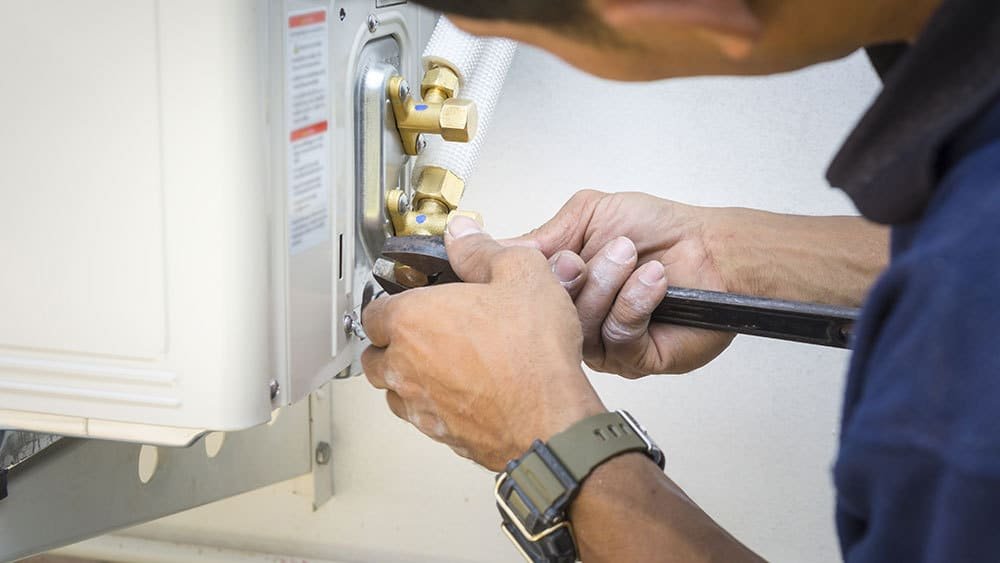Last summer, I made a huge mistake — I ignored my air conditioner when it started acting up. It was early June, the air was heavy and sticky, and I noticed my AC wasn’t cooling like it used to. The air felt lukewarm, the system ran all day, and the electric bill jumped higher than ever.
I brushed it off, thinking it was just the weather or maybe a temporary glitch. But a few weeks later, I came home to find my house nearly as hot as the outdoors. That’s when I realized the truth: skipping my AC tune-up service had finally caught up with me.
What followed was a long, sweaty lesson in why regular HVAC maintenance isn’t optional — it’s essential.
The Day I Realized My AC Wasn’t Cooling Like It Used To
When Weak Airflow and Strange Noises Started Showing Up
It began with subtle signs. The airflow felt weaker, and the vents made a faint rattling sound every time the unit kicked on. I also noticed a musty smell whenever the air started blowing.
Looking back, these were classic warning signs of clogged filters and dirty coils — something any HVAC technician could’ve caught during a regular AC tune-up. But at the time, I didn’t think much of it. I figured, “It’s still running, so it must be fine.”
Why Ignoring Small AC Issues Can Cost More Later
That mindset cost me — literally. Within a month, the system froze up. The evaporator coil was covered in ice, the refrigerant levels were low, and the blower motor had overworked itself trying to compensate.
By skipping a simple AC inspection, I turned a routine $100 maintenance visit into a $600 repair bill. Worse, I had to wait three days for service during the busiest heatwave of the year.
The Hidden Problems That Creep Up Without Regular Tune-Ups
Dust, Leaks, and Poor Efficiency — The Silent System Killers
I didn’t realize how much dust and debris collect inside an air conditioner over time. When the condenser coils and filters get dirty, the unit can’t breathe properly. It has to work twice as hard to cool the same space.
That strain leads to energy waste, high utility bills, and eventually — system failure. My technician later showed me how clogged my coil fins were, and it was shocking. It looked like a lint trap that hadn’t been cleaned in months.
How Skipped Maintenance Leads to Bigger Repair Bills
During the service, the technician found a slow refrigerant leak that had probably been there all season. Because I hadn’t scheduled a tune-up, it went unnoticed until it caused the system to freeze.
He explained that refrigerant doesn’t “run out” like gas in a car — if it’s low, there’s a leak. That meant I’d been running my air conditioner under stress the entire time, damaging both the compressor and the evaporator coil. A simple yearly tune-up could’ve caught that leak early.
Finding Reliable AC Tune-Up Services Near Me
What to Look for in a Professional HVAC Technician
Once I realized I needed help, I started searching for AC tune-up services near me. I didn’t want another quick fix — I wanted someone who could actually diagnose and prevent future issues.
That’s when I learned what to look for:
- EPA certification for refrigerant handling
- Experience with both central air systems and ductless units
- Transparent service pricing
- Preventive maintenance plans for seasonal check-ups
Choosing a certified HVAC professional made all the difference. They didn’t just fix the symptoms — they helped me understand what went wrong and how to avoid it next time.
Why Certified Service Matters for Safety and Performance
When dealing with refrigerants, electrical components, and pressurized parts, safety is everything. Certified technicians follow Energy Star guidelines and local HVAC codes, ensuring systems run efficiently without risking electrical hazards or leaks.
After the visit, my technician gave me a report showing airflow readings, coil condition, and thermostat calibration. It was eye-opening — and reassuring.
The Real Fix — What an AC Tune-Up Actually Includes
Cleaning Coils, Checking Refrigerant, and Tightening Components
Before this experience, I didn’t really understand what an AC tune-up involved. I assumed it was just changing filters and calling it a day. But it’s much more comprehensive.
A proper tune-up includes:
- Cleaning condenser and evaporator coils
- Checking refrigerant levels and pressure
- Inspecting electrical connections
- Testing thermostat accuracy
- Lubricating moving parts
- Clearing the condensate drain line
That thorough process ensures your system isn’t just running — it’s running efficiently and safely.
How a 30-Minute Service Visit Can Prevent a Full System Failure
The best part? The entire service took less than an hour. In that short time, the technician prevented what could’ve been another costly breakdown. A little preventive care saved me from dealing with days of discomfort and hundreds in extra costs.
I learned that most HVAC systems, whether Trane, Carrier, or Lennox, benefit from at least one tune-up per year — ideally in spring before the summer demand spikes.
How Regular Tune-Ups Improved My Home’s Comfort and Bills
The Surprising Energy Savings After Just One Visit
After the tune-up, I immediately noticed how much smoother and quieter my system ran. The air felt cooler, and it didn’t have to run as long to reach the set temperature.
The next utility bill confirmed it — I saved nearly 20% on energy costs compared to the previous month. That alone made the maintenance worth it. I also learned that keeping the air filters clean helps airflow, reducing the workload on the compressor.
Why My AC Now Runs Quieter and Cools Faster
Before the tune-up, my AC used to hum and vibrate. Turns out, some of the fan blades were slightly loose. Once the technician tightened and rebalanced them, the noise disappeared.
The air distribution also improved because the ducts were checked for leaks. That evened out the temperature across rooms — no more hot spots or freezing corners. It felt like I had a brand-new system without replacing a single major part.
What I’d Tell Anyone Searching for AC Tune-Up Services
Schedule Before Summer, Not After a Breakdown
If I could go back, I’d schedule my AC maintenance in early spring — before the heat waves and service delays hit. Technicians are less busy then, and the rates are often lower.
Waiting until something breaks is the most expensive way to maintain an HVAC system. Preventive care is always cheaper than emergency repair.
The Peace of Mind That Comes From Prevention
Now, I’ve made AC tune-ups part of my yearly home routine — like changing smoke detector batteries or cleaning gutters. It gives me peace of mind knowing the system is ready when I need it most.
It’s not just about comfort; it’s about protecting an investment. A well-maintained air conditioner can last 15 to 20 years, while neglected ones often fail within 10.
Conclusion: The Cost of Skipping Is Always Higher
Looking back, skipping that tune-up was one of those “you live and learn” moments. I thought I was saving time and money, but in reality, I was shortening the life of my system and wasting energy every day.
Now I know better. Regular AC tune-up services aren’t just a recommendation — they’re a necessity for keeping your home cool, safe, and efficient.
So, if your AC’s been running nonstop or sounding a bit off, don’t ignore it like I did. Call a certified technician, schedule that check-up, and save yourself from learning the hard way — because comfort shouldn’t come at the cost of regret.
Do Read: Batch Convert PDF to PNG: 5 Truly Free Tools That Work




